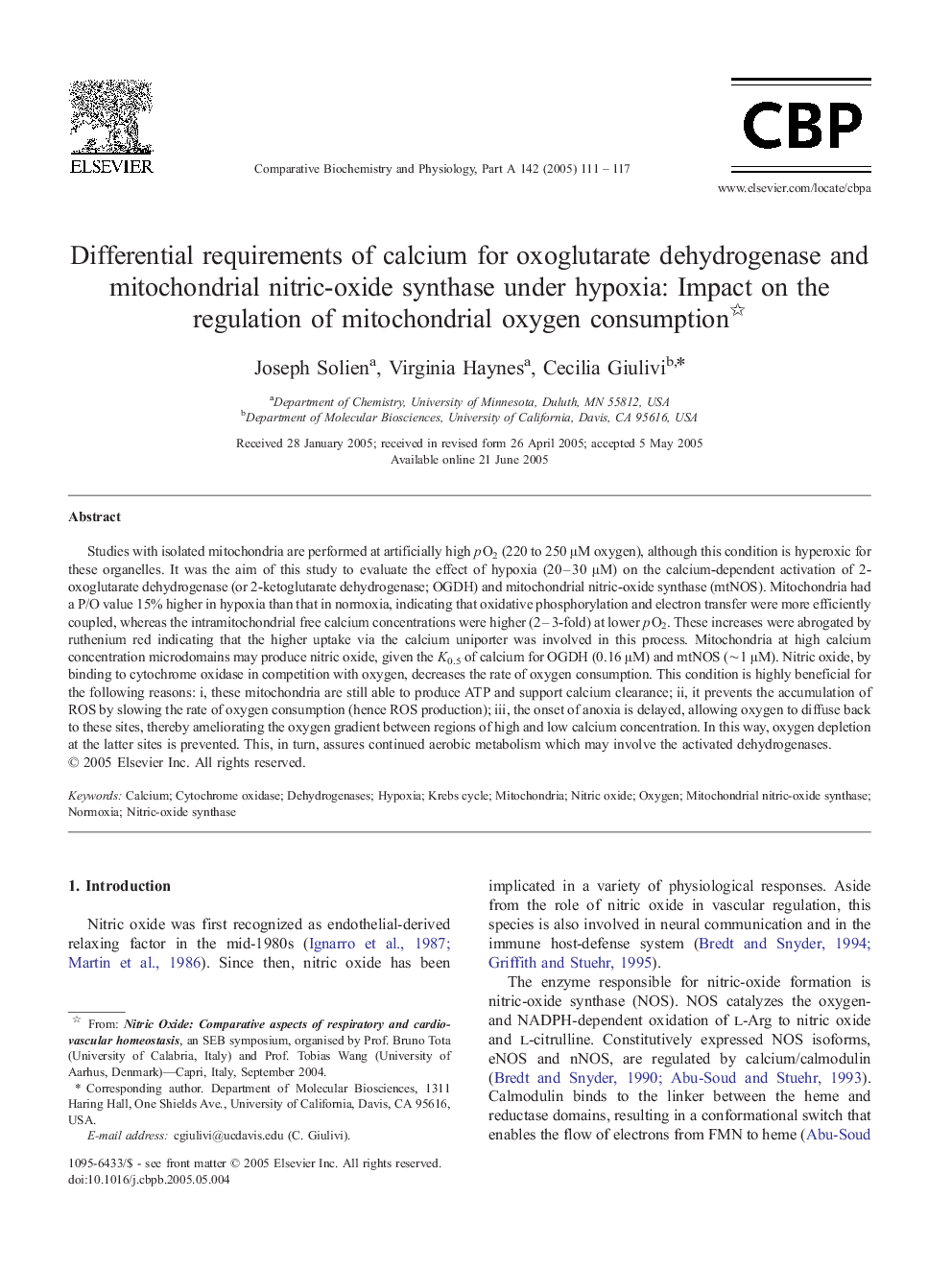| Article ID | Journal | Published Year | Pages | File Type |
|---|---|---|---|---|
| 10819128 | Comparative Biochemistry and Physiology Part A: Molecular & Integrative Physiology | 2005 | 7 Pages |
Abstract
Studies with isolated mitochondria are performed at artificially high pO2 (220 to 250 μM oxygen), although this condition is hyperoxic for these organelles. It was the aim of this study to evaluate the effect of hypoxia (20-30 μM) on the calcium-dependent activation of 2-oxoglutarate dehydrogenase (or 2-ketoglutarate dehydrogenase; OGDH) and mitochondrial nitric-oxide synthase (mtNOS). Mitochondria had a P/O value 15% higher in hypoxia than that in normoxia, indicating that oxidative phosphorylation and electron transfer were more efficiently coupled, whereas the intramitochondrial free calcium concentrations were higher (2-3-fold) at lower pO2. These increases were abrogated by ruthenium red indicating that the higher uptake via the calcium uniporter was involved in this process. Mitochondria at high calcium concentration microdomains may produce nitric oxide, given the K0.5 of calcium for OGDH (0.16 μM) and mtNOS (â¼1 μM). Nitric oxide, by binding to cytochrome oxidase in competition with oxygen, decreases the rate of oxygen consumption. This condition is highly beneficial for the following reasons: i, these mitochondria are still able to produce ATP and support calcium clearance; ii, it prevents the accumulation of ROS by slowing the rate of oxygen consumption (hence ROS production); iii, the onset of anoxia is delayed, allowing oxygen to diffuse back to these sites, thereby ameliorating the oxygen gradient between regions of high and low calcium concentration. In this way, oxygen depletion at the latter sites is prevented. This, in turn, assures continued aerobic metabolism which may involve the activated dehydrogenases.
Keywords
Related Topics
Life Sciences
Biochemistry, Genetics and Molecular Biology
Biochemistry
Authors
Joseph Solien, Virginia Haynes, Cecilia Giulivi,
